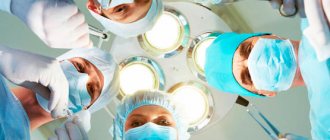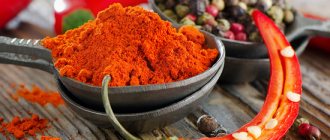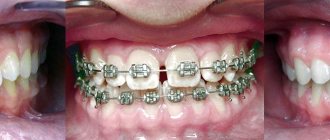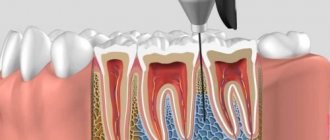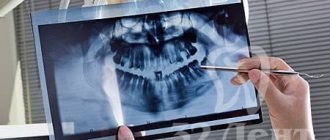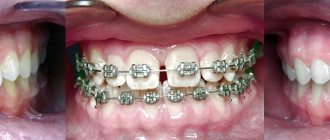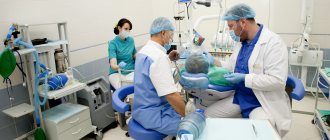Scarring
Healing of a granulating wound occurs through scarring and epithelization. At the final stage of healing, collagen fibers appear among the cells of the granulating tissue, the number of granules decreases, and the number of fibers increases. Ultimately, the fibrous substance passes into the connective tissue and forms a scar.
When wounds heal by primary intention, delicate scar tissue is formed, which tends to resolve.
In case of healing by secondary intention, a rough scar is formed, which will not be easy to get rid of.
Home first aid kit
However, if we are talking about a universal remedy, which is better to have in a home medicine cabinet and which is suitable for all family members, then preference should be given to dexpanthenol preparations, which are approved for use in children from the first days of life, in pregnant women and women during lactation. Since at each stage of the wound process different forms of release of this drug are recommended, it would be optimal to have an ointment and a cream or gel combined with an antiseptic in the first aid kit.
Sources
- Abaev Yu. K. Biology of acute and chronic wound healing // Medical news. - 2003. - T. 6. - P. 3–10.
- Afanasyev V.V. // Solcoseryl: results and prospects. Collection of scientific and practical works. articles. St. Petersburg - 1997. - pp. 4–9.
- Butko Ya. A., Drogovoz S. M., Deeva T. V., Lyapunov N. A. Study of the reparative properties of creams with dexpanthenol and ceramides // Scientific bulletins of BelSU. Series: Medicine. Pharmacy. - 2013. - No. 18 (161).
- Zhilyakova E. T., Ivashchenkova A. O. Analysis of the Russian pharmaceutical market of drugs for the treatment of thermal burns // Young scientist. - 2022. - No. 39 (8).
Types of wound healing
According to the classification of I.V. Davydkovsky, the following types of wound healing are distinguished:
- closing the defect of the epithelial cover, which occurs when the upper epithelial layer is damaged;
- healing under a scab, or healing without a scar. Observed on mucous membranes in case of minor defects.
- healing by primary intention, or healing without suppuration. Characteristic of wounds with damage to the skin and tissue underneath.
- healing by secondary intention, or healing through suppuration and granulation. Occurs with extensive wounds, accompanied by foreign objects entering the wound, tissue necrosis, microbes and infections.
Doctor's consultation: when is it necessary?
It is recommended to see a doctor, even if the wound does not seem serious. In addition, there are a number of cases when you cannot do without the help of a specialist. Such cases include:
- continued bleeding from the wound - it may be necessary to stop it by ligating the vessel, applying a suture, or using a hemostatic sponge;
- foreign bodies remaining in the wound, contamination;
- wounds caused by heavily contaminated, rusty, painted, grease-coated objects;
- wounds with signs of inflammation;
- wounds caused by animals;
- suspicion of a fracture, dislocation, ligament rupture.
In addition, it is not recommended to try to use certain medications on your own. The doctor prescribes an ointment for wound epithelization.
Stages of healing
The wound healing process goes through three main stages: inflammation, regeneration, and restoration of the epithelium.
The inflammation phase begins immediately after injury and in an uncomplicated state lasts for 4–5 days. During the hemostasis stage, platelets attach to sites of injury and cause a chemical reaction that activates fibrin, which forms a matrix network and binds platelets to each other. This is how blood clots form, blocking damaged blood vessels and stopping bleeding.
At the stage of proliferation and regeneration, the process of angiogenesis, collagen deposition, and the formation of granulation tissue (young connective tissue formed in places of defects) occurs. The regeneration stage can last 2–4 weeks depending on the size of the defect.
The final stage is the formation of the epithelium. Depending on the severity of the injury, the process can last from several weeks to a year or more.
Literature
- Belyaev A.N., Kozlov S.A., Taratykov I.B., Novikov E.I. Patient care in a surgical clinic: textbook. allowance. – Saransk: Mordovian University Publishing House, 2003. – 136 p.
- Buyanov V. M. Egiev V. N. Udotov O. A. Surgical suture. – M.: Antis, 2000. – 92 p.
- Zoltan J. Operating technique and conditions for optimal wound healing. – Budapest: Publishing House of the Academy of Sciences of Hungary, 1983. – 175 p.
- Mironova E. N. Fundamentals of physical rehabilitation. – M.: MOO “Academy of Safety and Survival”, 2016 – 310 p.
- Semenov G.M., Petrishin V.L., Kovshova M.V. Surgical suture - St. Petersburg: Peter, 2001. - 256 p.
Author: Korolev E. S.
Reviewer: reflexologist Kurus A. N.
Wound treatment
The choice of wound treatment method largely depends on their type (infected or necrotic, wet exuding or fibrous granulating, trophic ulcers or bedsores). Only a doctor can choose the optimal solution for treating each type of wound.
In addition, at each stage of wound healing, it is necessary to use a different agent: one that promotes the removal of exudate, the formation of granulation tissue, accelerating epithelization, etc.
When treating wounds, you need to remember that the wound does not heal on its own, but thanks to the body’s resources aimed at healing it. The immune, endocrine, and circulatory systems are involved in this process. A qualified doctor, along with treating the wound itself, will definitely prescribe a vitamin complex to maintain the body.
Correct form
The selection of the form of the healing agent is no less important than the choice of the active substance. Let's repeat the basic rules.
- Fat-based ointments are contraindicated in the first stage of the wound process - they create a film and prevent adequate outflow of exudate and cleansing of the wound.
- The drug used in the early stages must have a hydrophilic base and retain moisture for a long time. Dosage forms that meet such requirements include solutions, gels, aerosols and creams on a hydrophilic basis.
- Aerosols are convenient for treating burns when any touch to the wound is extremely painful.
- As granulations grow during the second phase of the wound process, more and more of the wound surface must be treated with ointment. And when the wound becomes dry and significantly reduced in size, it is necessary to completely switch to ointment forms. By creating a fatty film on the surface of epithelialization areas, the ointment will protect young sensitive skin cells from drying out and provide them with greater resistance to environmental factors.
How to speed up healing
The speed of wound healing varies. It depends on the nature of the injury and the individual characteristics of the patient, such as age, nutrition, and medications taken.
To speed up healing, it is necessary to provide optimal conditions for tissue regeneration at each stage. This role is fulfilled by therapeutic dressings designed for each stage of healing.
The method of hydrotherapy has a positive effect. Its essence consists in the sequential use of two dressings HydroClean and HydroTac. Using the first, the wound is cleaned, and then a second is applied, creating optimal conditions for granulation and epithelization.
Professional care for postoperative sutures at Stoletnik MC
If in any matters related to taking care of your own health, you prefer to trust professionals, you are welcome at the medical office. To help those who are not sure how to properly care for a suture after surgery, a wide range of post-operative services is available. Among them:
- dressing large and small;
- removal of stitches up to 5 cm;
- removal of sutures 5–10 cm;
- removal of stitches more than 10 cm;
- sanitation of the wound surface;
- scar excision;
- and much more.
The responsibility and high professionalism of the clinic’s staff is the key to the safe and speedy recovery of our patients. And the affordability of the services provided will eliminate the need to waste time and nerves on trips to the clinic. Sign up for procedures by phone: +7 (8412) 999-395, 76-44-20. We are waiting for you at the address: Penza, st. Chaadaeva, 95 (Shuist microdistrict).
What to do if the wound does not heal
Non-healing or chronic are wounds that do not respond adequately to therapy despite prolonged treatment. Such wounds are usually caused not by external factors, but by reasons hidden inside the body, leading to disruption of metabolic processes and, as a consequence, disruption of the wound healing process. This category includes trophic ulcers, bedsores, and diabetic foot ulcers. Before using any dressings, consult a doctor: therapy and treatment of wounds can only be prescribed to you by a doctor!
For the treatment of chronic wounds, HARTMANN has developed a two-bandage system - HydroClean Plus and HydroTac.
The HydroClean Plus cleansing dressing can be used at all stages of wound healing, effectively removing necrotic tissue and pathogenic bacteria from the wound surface. They get caught in the absorbent layer and die under the influence of the antiseptic. The HydroTac dressing has absorbent and moisturizing properties and also protects the wound from secondary infection.
With the help of the hydrotherapy system, many patients have been able to significantly alleviate suffering and improve their quality of life.
Selection
Wound healing agents are selected taking into account the degree of tissue damage and the type of wound.
If the wound is clean and not extensive, then it makes sense to accelerate the regeneration process only at the third stage - the epithelization stage, and the first and second stages require only primary cleansing and regular change of aseptic dressings.
For festering wounds, more extensive and/or deep injuries, consultation with a specialist will be required, since the selection of funds will depend on the severity of the process and may require the prescription of local antibacterial drugs.
So, let’s look at drugs that are popular among buyers and pharmacists to speed up wound healing.
According to the “Register of Medicines of Russia - RLS” for 2017, 1,185 drugs, 143 trade names and 40 active ingredients were registered on the topic “Regenerants and reparants”. The largest number of drugs among tissue-specific stimulators of regeneration also affects the repair of the skin. Indications for the use of these products are difficult-to-heal wounds, trophic ulcers, burns, bedsores and other violations of the integrity of the skin. We included three key tools in the review, according to ten surgeons we interviewed from Moscow, St. Petersburg and Novosibirsk.
Dexpanthenol
Anti-inflammatory, dermatoprotective agent, stimulates regeneration processes. Available in the form of ointments, creams and sprays, in combinations with chlorhexidine digluconate and benzyldimethylmyristoylaminopropylammonium.
Dexpanthenol is quickly absorbed and converted into pantothenic acid, binds to plasma proteins and stimulates skin regeneration. Pantothenic acid is an essential component and stimulator of the synthesis of coenzyme A. Coenzyme A, in turn, is involved in almost all metabolic processes: the tricarboxylic acid cycle, as well as in the metabolism of carbohydrates, fats and fatty acids, phospholipids and proteins.
Dexpanthenol is widely used to treat dry skin, burns (including sunburn), scratches, abrasions, boils, bedsores, cracks and inflammation of the nipples of the breast in nursing mothers. The drug is also used for the prevention and treatment of diaper rash in children.
As a rule, it is well tolerated and can be used during pregnancy and lactation, as well as in children from an early age. Allergic reactions (urticaria, itching) are possible in case of individual intolerance. Preparations based on dexpanthenol have been studied better than others. This is not surprising, because pantothenic acid was isolated at the beginning of the twentieth century and was actively studied.
Deproteinized hemoderivative of calf blood
A drug that improves trophism and tissue regeneration. Available in the form of cream, gel, ointment. There is also a release form in the form of injection solutions and tablets (used as antihypoxants and antioxidants to correct metabolic disorders in chronic diseases of the cardiovascular and nervous systems).
Accelerates repair and regenerative processes in damaged tissues. Increases the absorption and utilization of oxygen, accelerates the transport and utilization of glucose. All this leads to an improvement in the energy metabolism of cells and a decrease in the formation of lactate under ischemic conditions (excessive amounts of lactate in tissues lead to changes in pH, which interferes with adequate regeneration). Strengthens collagen synthesis, stimulates cell proliferation.
Deproteinized hemoderivative of calves' blood is used externally in the form of an ointment and gel for wounds and inflammatory diseases of the skin and mucous membranes, burns (including sunburn), skin cuts, abrasions, scratches, ulcers, as well as for the prevention and treatment of bedsores. Use in children, pregnant and lactating women is possible.
External use is well tolerated. In rare cases, patients with a history of hypersensitivity reactions may develop allergic reactions.
Zinc hyaluronate
Wound healing, regenerating, antimicrobial agent. Available in the form of a gel and solution for external use.
When hyaluronic acid interacts with water molecules, a dispersion matrix appears, which forms a natural supporting frame for cells involved in wound healing, increases the activity of granulocytes and macrophages, enhances the proliferation of fibroblasts and angiogenesis, and accelerates the formation of collagen. The spectrum of antimicrobial activity of zinc includes strains of Staphylococcus aureus, streptococcus, Escherichia coli and Pseudomonas aeruginosa.
When applied topically, systemic resorption is extremely low. Affects all 3 phases of the wound process. Reduces pain during dressings (prevents the dressing from drying out). The solution is used for all types of poorly healing infected wounds, trophic ulcers, bedsores, fistulas; The gel is often used in the complex treatment of acne. There is no data on the use of the drug during pregnancy or lactation. Contraindicated in case of individual intolerance to the components.
Table 1. Use of wound-healing drugs for the treatment of non-infected wounds
| Drug compound | Stages of the wound process | Release form | Ease of use | Peculiarities |
| Hemoderivative of the blood of dairy calves | 1, 2, 3 | Gel, ointment, cream | + | Versatility |
| Zinc hyaluronate | 1, 2, 3 | Solution | — | Versatility |
| Gel | + | |||
| Dexpanthenol | 1, 3 | Ointment, cream, aerosol | + | Application is limited to the stage of the wound process |
| Dexpanthenol + benzyldimethyl-myristoylamino-propylammonium | 2 | Gel | + | Application is limited to the stage of the wound process |
| Dexpanthenol + chlorhexidine bigluconate | 2 | Cream | + | Use limited to wound stage |
